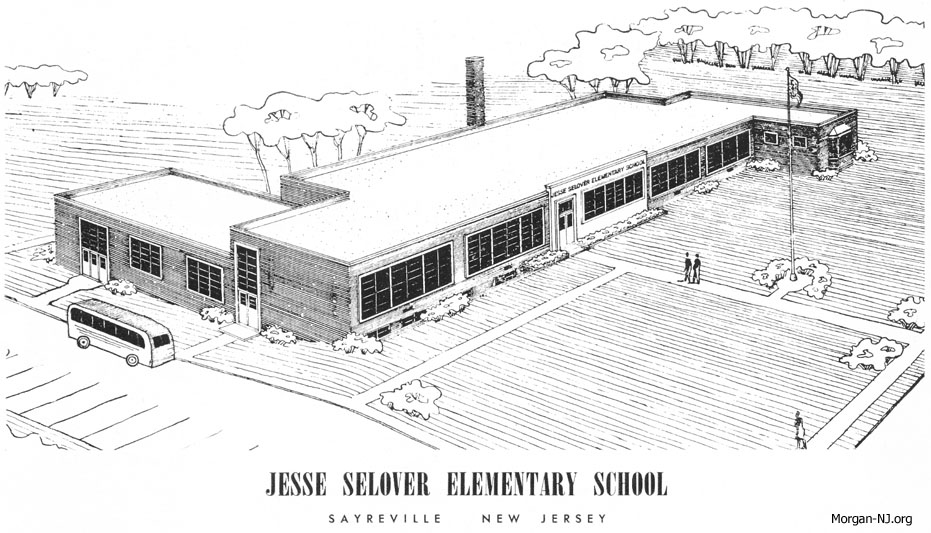
Morgan Memories – Jesse Selover School
A big thank you goes to my late sister Linda’s childhood friend Dorothy Grant Scuorzo for a number of newspaper clippings, meeting minutes, and the original signed copy of the Constitution and By-Laws of the Jesse Selover Parent-Teacher Organization (PTO). The signed constitution contains the handwritten text, “The above Constitution and By-Laws were adapted unanimously by the organization on Tuesday October 19, 1954” and contains 90 signatures of Morgan parents, including Dorothy’s mother, Hazel Grant, the first President of the Jesse Selover School PTO.
Based on Facebook postings, a great many of the now-adult baby boomer era children of Morgan hold a special place in their hearts for their elementary school which was named for a man who spent 38 of his 44-year career as the Supervising Principal of the Sayreville Public Schools, Mr. Jesse Selover.
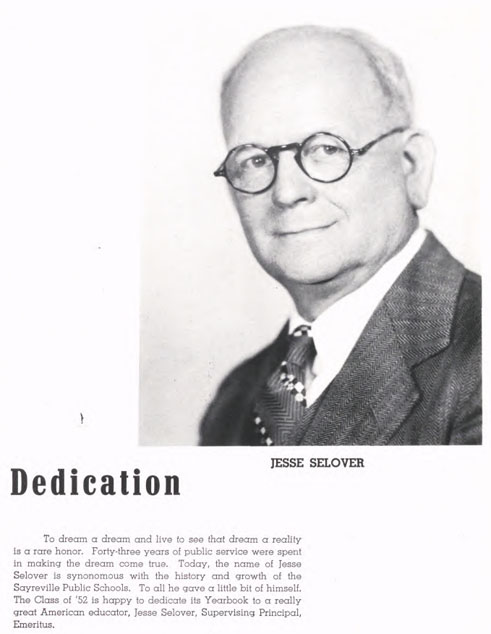
Here are the words Dr. Stanley Marcinczyk, President of the Sayreville Board of Education, spoke during the ground breaking ceremony for Jesse Selover School on the morning of Saturday, September 18, 1953:
“Ladies and Gentlemen, I have been delegated to turn over the first shovel full of earth for the Jesse Selover School, but as I glance about me I see in this fine assembly one who is worthier than I to merit this distinct honor; one whom we regard as the “Father of the Sayreville pubic schools system” and who for forty-four years guided the borough’s public schools so well that he raised their status from an eight-room system to a high standing in Middlesex County with generous approval by the State Board of Education on efficiency of the different progressive developments. The system will now include four grammar schools, a high school, a staff of approximately 70 teachers, two nurses, a dental clinic, a superintendent, and other operational, supervisory and administrative employees.
I refer to Mr. Selover, our former superintendent.”
It was then Mr. Selover who then scooped up the first shovelful of dirt on the symbolic groundbreaking.
Jesse Selover’s Origin

Jesse Selover was born in South River, the town just west of Sayreville across the river coincidentally named South River 😉, on 6 May 1878. Jesse was the third of what looks to be five children of Daniel Curtis Selover (1880 US Federal Census Occupation: Boatman) and Lydia Connet Wilmurt (1880 US Federal Census Occupation: Keeping House).
An interesting tidbit about the Borough of South River is that starting from when the area was first settled by Europeans, circa 1683, it was commonly referred to as the South River Landing. In 1720, its name was declared to be Willettstown (after either Hartshorne Willett or, more likely, Samuel Willett). In 1784, it was renamed to Washington in honor of General George Washington (this was five years before General Washington became President Washington). As of 1823, the village of Washington had no more than 10 houses and a single store. Finally, in 1870, the village name became South River. On February 28, 1898, South River broke away from the township of East Brunswick and became the Borough of South River – the political status it retains currently.
Mr. Selover’s obituary indicates Jesse was “the first boy graduated from South River High School. In 1896, he entered Rutgers University and then became a teacher in [Sayreville] Schools… In 1901, he became principal of Washington School, Sayreville, and five years later he was named supervising principal.” Both the 1900 US Federal Census and the 1905 New Jersey state census lists his occupation as “Teacher”. The 1900 US Federal Census lists his address as being on George Street in South River.
Jesse Selover married Jean “Jennie” Innes Armstrong, a fellow South Riverian on June 29, 1910. Interestingly, the 1880 US Federal Census indicates at age 7 months, she was residing in Lower Oxford Township in the County of Chester in Pennsylvania but her Certificate of Death lists her birthplace as being Delaware. There is a ledger entry for their marriage in the ledger of the First Methodist Episcopal Church of Atlantic City, NJ. They had two children, Lucille Athalie Selover (1912 to 1996 – married Williard Hammann and lived in Long Island, NY) and Doris Elizabeth Selover Sly (April 18, 1916 to July 31, 2006 – married Lawrence Sly and lived in Portsmouth, VA), as well as six grandchildren.
Here is Jesse Selover’s World War I Draft Registration card.
According to the 1930 US Federal Census, Jesse Selover, his wife, and daughters lived on Virginia Street in South River. His occupation was still listed as “Teacher”. The census indicated that they even had a radio set!
In the 1940 US Federal Census, Mr. Selover’s occupation was listed as “Sup Prin”. Although Mr. Selover was over 60 during the time of World War II, he was still required to fill out a draft registration card.
During his lifetime, Mr. Selover was active with the Conklin Methodist Church in South River (two blocks away from his house) and was one of the founders of the South River Library.

Mr. Selover retired as supervising principal in 1944 but was called back to serve in that post for two more years. In 1953, Jesse and Jean got out of the cold and moved to NE 45th Street in Fort Lauderdale, Florida, a couple of miles away from the spectacular Fort Lauderdale beach on the Atlantic Ocean.
Mr. Selover passed away at his Fort Lauderdale home on April 15, 1958. His obituary, heavily referenced for this section, is contained in column 1 of page 2 of the Second Section of the April 24, 1958 Matawan Journal. He wrote the unpublished three-volume “History of South River, New Jersey” which was subsequently completed by Jean after his death.
Jean Selover, born the second of two children at the time on September 29, 1879 to David Armstrong – an Irish immigrant listed with the occupation of “Farmer” and Mary Applegate from Delaware – passed away at age 90 on January 1, 1970 with her residence listed as Norfolk, CA. She must have been living with her daughter, Doris at that time. Both Mr. and Mrs. Selover are at rest in Washington Monumental Cemetery in South River, less than a mile away from their Virginia Street home.
Jesse Selover School’s Origins
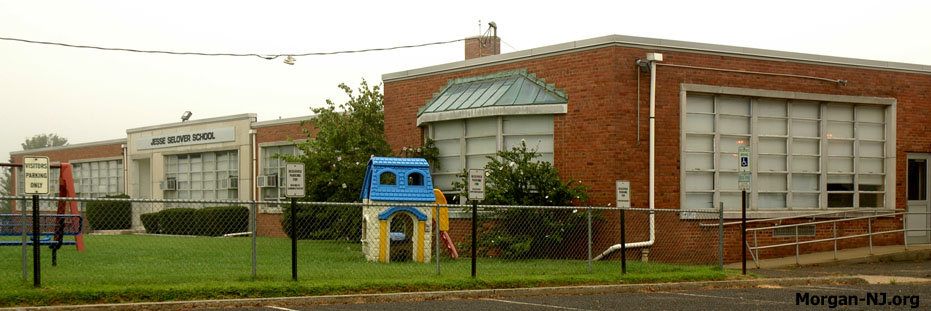
In the early 1950s, Morgan was experiencing a housing boom and, like the rest of the county, was still in the first third of what would be later known as the “Baby Boomer” years (1946 – 1964). “Baby Boomers” are the generation of approximately 76 million children born in the years following the end of World War II primarily to the veterans who served in that war.
This period was a time of expansion. With the post war prosperity – and the car, families moved out of the cities and into the suburbs (whether the suburbs existed yet or not). For Morgan, the area families were mostly flocking to was composed primarily of land from the one-time estate of Richard Stevens Conover, “Sandcombe,” located south of Christ Church Cemetery to Luke Street and between South Pine Avenue and the cliffs overlooking the railroad and Raritan Bay. Much of this area was originally developed by Charles Steuerwald’s Wessco Realty Company’s “Bayview Manor” starting in 1916 after he acquired the land of the Conover estate.
The other growing part of Morgan was on the remains of the Morgan Family plantation south of Luke Street and from South Pine Avenue to Morgan Avenue overlooking the bay. While much of this area was developed prior to World War II – with the neighborhoods between Tyler Street/Old Spy Road and Morgan Avenue predating World War I – there were still some large and small parcels available for new housing.
All of the elementary school age children, from both the existing inventory of homes as well as the newly constructed homes, needed a place to go to school.
Though there were some nearby Catholic schools, i.e., Sacred Heart and St. Mary’s in South Amboy and Our Lady of Victories in Sayreville, the majority of families needed a tuition-free public elementary school located right nearby in their neighborhood. At the time, while some would have gone to the above-mentioned schools, the majority of elementary school-aged Morgan kids would have had to go to one of the other Sayreville public elementary schools (which school – Roosevelt?). In the early 1950s, the Borough of Sayreville – which Morgan is part of – recognized this need and initiated an effort to determine where the greatest need to build a new elementary school was.
Here are the results of a June 1952 survey, provided to us by Dorothy from her mother Hazel’s collection, which must have been initiated by the Sayreville Board of Education for this effort.
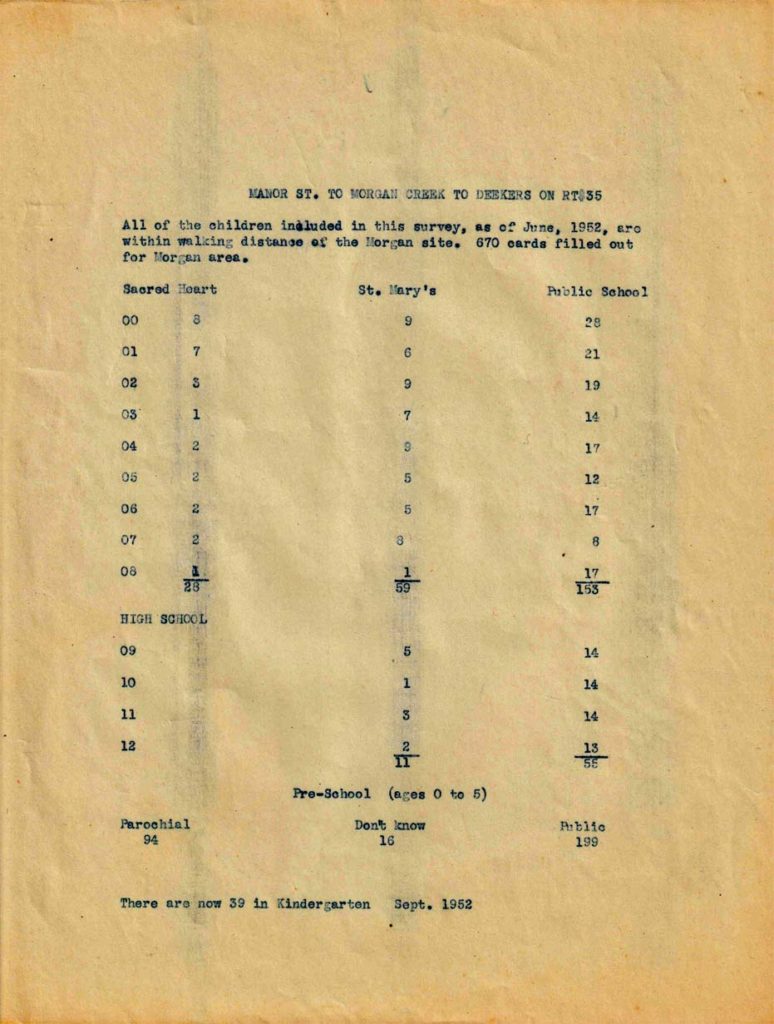
On August 4, 1952, the same Dr. Marcinczyk as was mentioned at the beginning of this article, sent out the below mimeographed letter (i.e., printed with purple ink) to Sayreville residents:
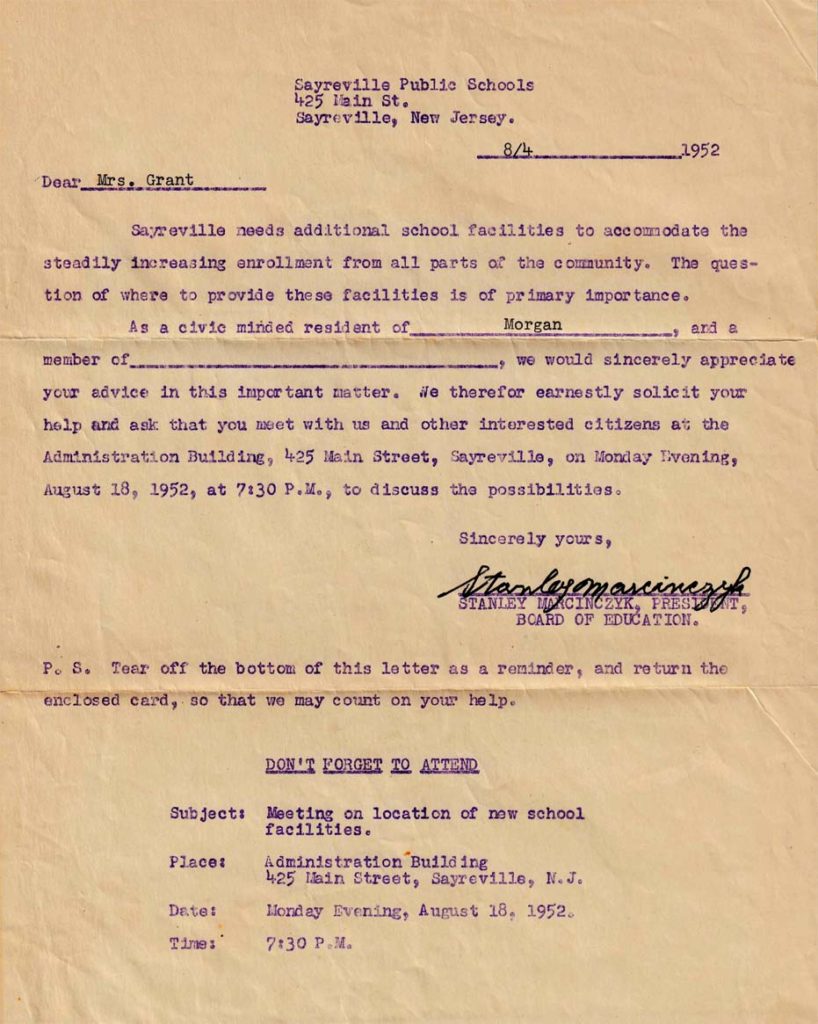
At the Monday, August 18, 1952 evening meeting, the following was mimeographed and distributed:
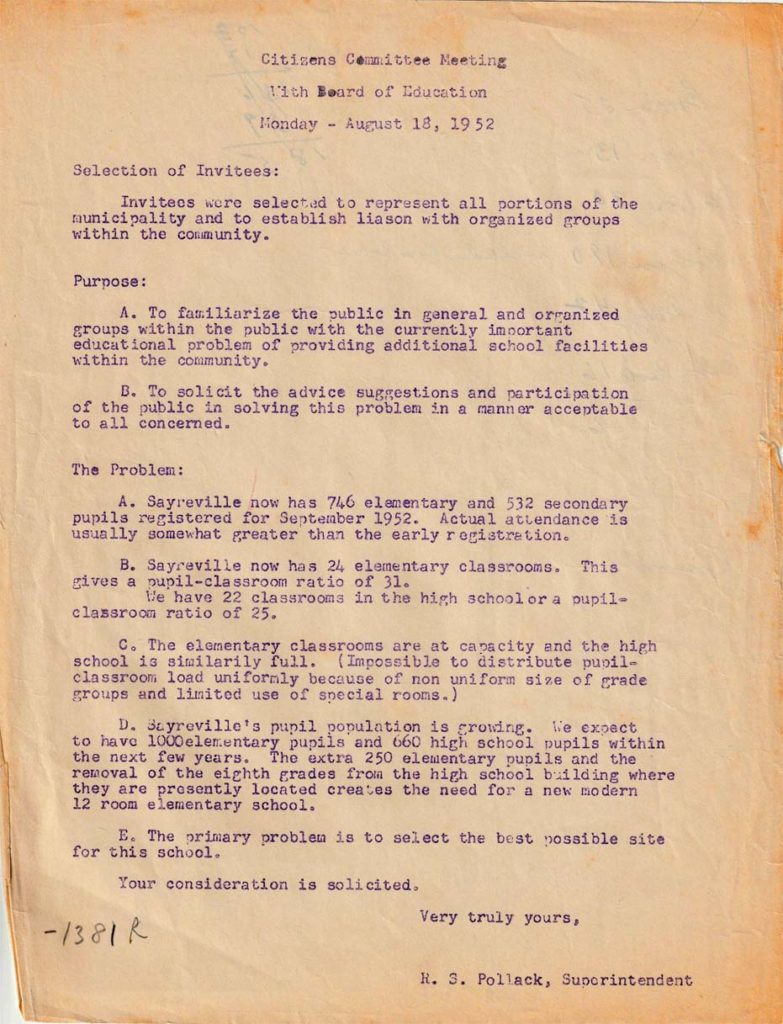
As of February, 1953, – six months later – the question of where to build the school was apparently still not yet settled. It appears that there were two sections of Sayreville in the run off, the President Park area and the Morgan area.
In an effort to get the decision to be to build the new school in Morgan, three Morgan residents decided to run for the Sayreville Board of Education in the Tuesday, February 10, 1953 election. At the time (and even still today) the Sayreville Board of Education was composed of nine board members. Of these nine slots, three were up for election in 1953.
Listed here are the three Morgan residents who competed for the three open board slots against six other people, all of whom lived in other parts of Sayreville:
- Mr. Robert Armstrong – Dolan Avenue
- Mrs. Hazel Grant – Midland Avenue
- Mr. William Nagle, Jr. – Dodd Place
Interestingly enough, these were the days where each candidate’s home address was listed in the newspaper! According to the Thursday, February 5 1953 South River Spokesman newspaper (also supplied by Dorothy):
The race may easily be decided by the vote in the Morgan area. Traditionally, this has been small in school board races. Last year for example, only 162 votes were cast in this section although the borough’s record vote exceeded 2,200. This year a special group, called Taxpayers of Districts 6 and 8, has been organized by the Morgan and Bay View Manor Improvement Association. They have named volunteers for a street-by-street canvas and hope to get out a vote of 800 or better.
Here are the results of that election from an unidentified newspaper though it is likely to have been the Thursday, February 12 1953 South River Spokesman:
Two of the three Morgan-backed candidates triumphed in Tuesday’s school election in Sayreville which held the previous record.
Robert Armstrong of Morgan led the ticket with 1,115 votes followed by Paul Karbowski, an incumbent, with 960 votes and William Nagel, Jr. of Morgan, who polled 876 votes. A tie for fourth place was scored by Mrs. Helen Smith, defeated in a bid for reelection, and Frank Samuel with 827 votes each.
Mrs. Hazel Grant, third member of the Morgan ticket, ran fifth with 757 votes; Frank Uszczak, 706 votes, J. Howard Kolb, 608 votes, and D. Herbert Davis, 583 votes.
The election centered in Morgan where 872 voters went to the polls in Districts 6 and 8. In previous years, fewer than 200 residents of this area voted. The great interest this year resulted from the battle over the location of the proposed elementary school. The present board has recommended President Park and Morgan residents banded together on a desire to have the school in their district.
It appears as if this critical election turned the tide and ultimately lead to the May 26, 1953 decision to build the new elementary school in Morgan!
The next question was where in Morgan to build it?
In his book, “A Municipal History of the Borough of Sayreville 1920 – 1958,” Joseph T. Karcher, LL.B. wrote:
Borough Conveys Title for School Site
On June 17th [1953] the borough conveyed property it had acquired by tax foreclosure in the Morgan section to the Board of Education as the site for the new Jesse Selover School. Simultaneously steps were taken to vacate sections of Grove Street and Jersey Street to enlarge the site for the school.
We saw that the symbolic groundbreaking for the Jesse Selover School took place on September 18, 1953. What they were to build was to be a nine-classroom school, with one classroom for each of the grades Kindergarten through 8th grade. The school was to also have two administrative offices, a nursing clinic room, two storage rooms, a boiler room, a kitchen, and finally, a large all-purpose room containing foldable lunch tables and a stage. The construction budget for this new school was $396,000.
Page sixteen of the March 11, 1954 issue of the South Amboy Citizen had the following announcement regarding Jesse Selover School.
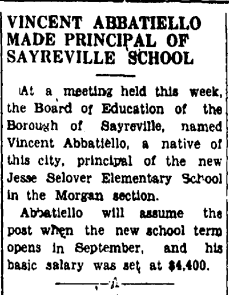
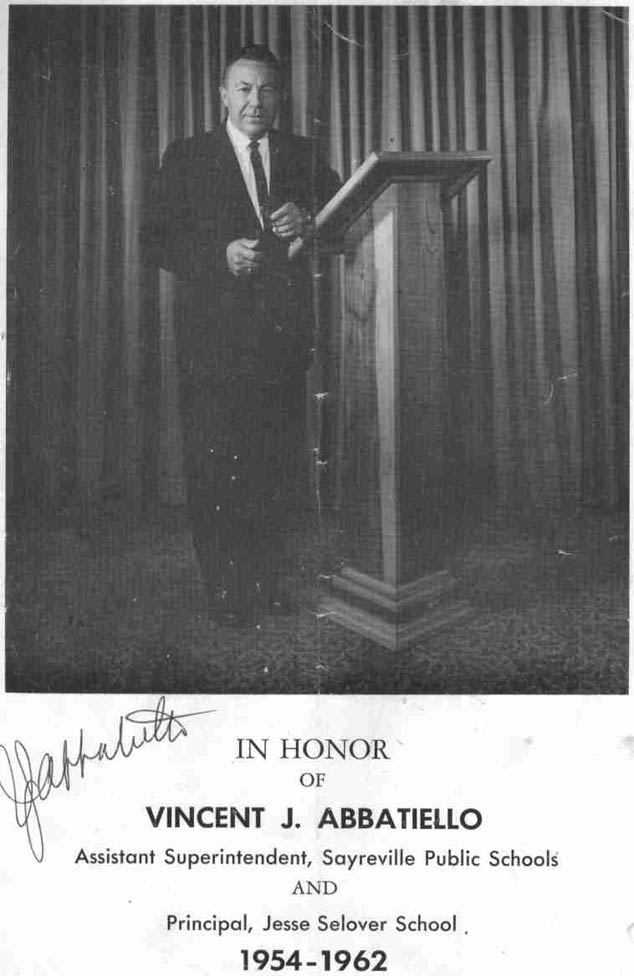
Finally, Jesse Selover School opened in September 1954. Here is the program from the opening ceremonies from September 18, 1954 (again, thanks to Dorothy):
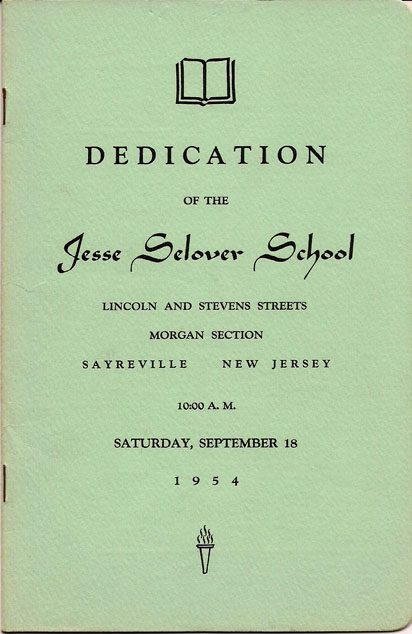
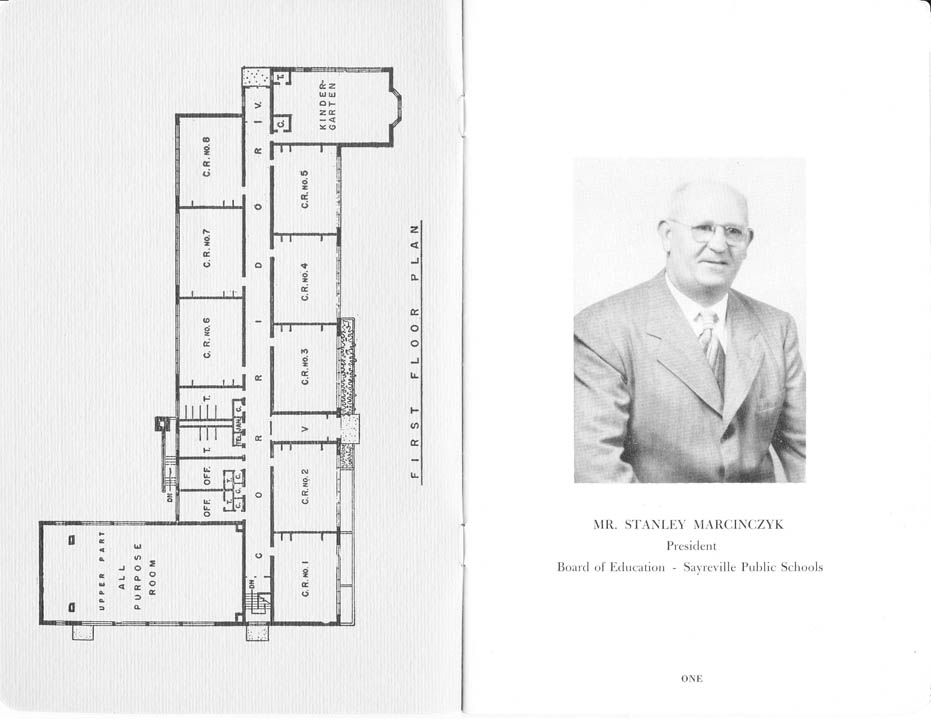
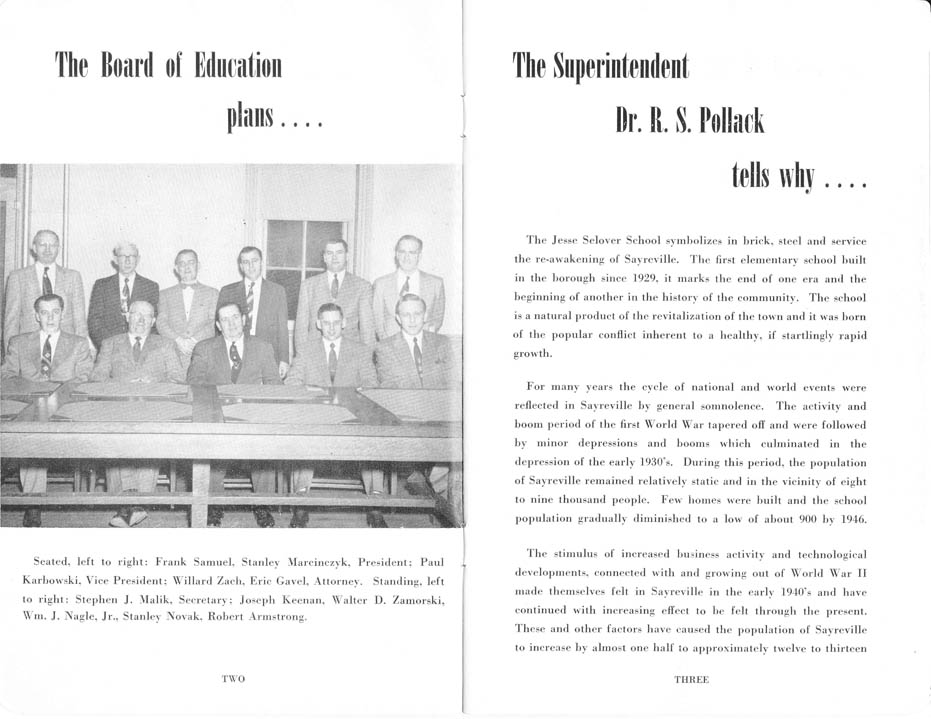
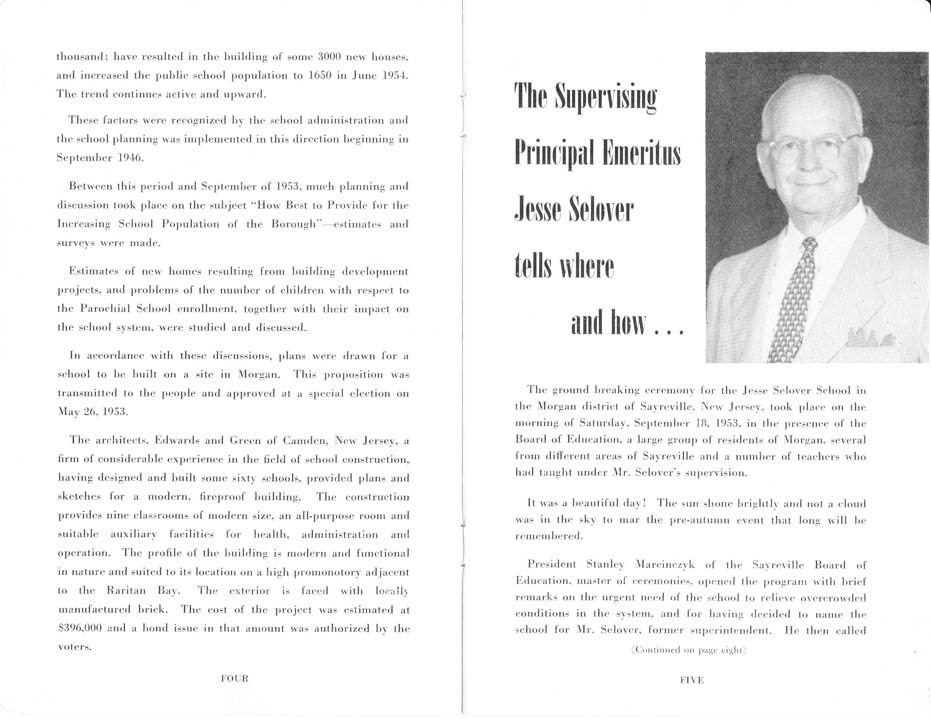
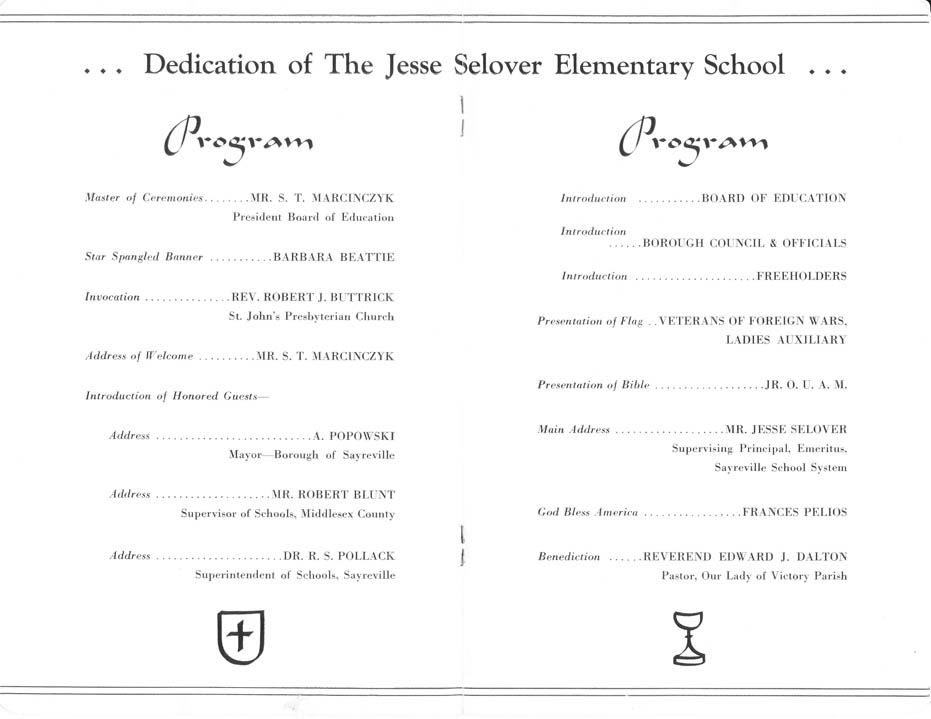
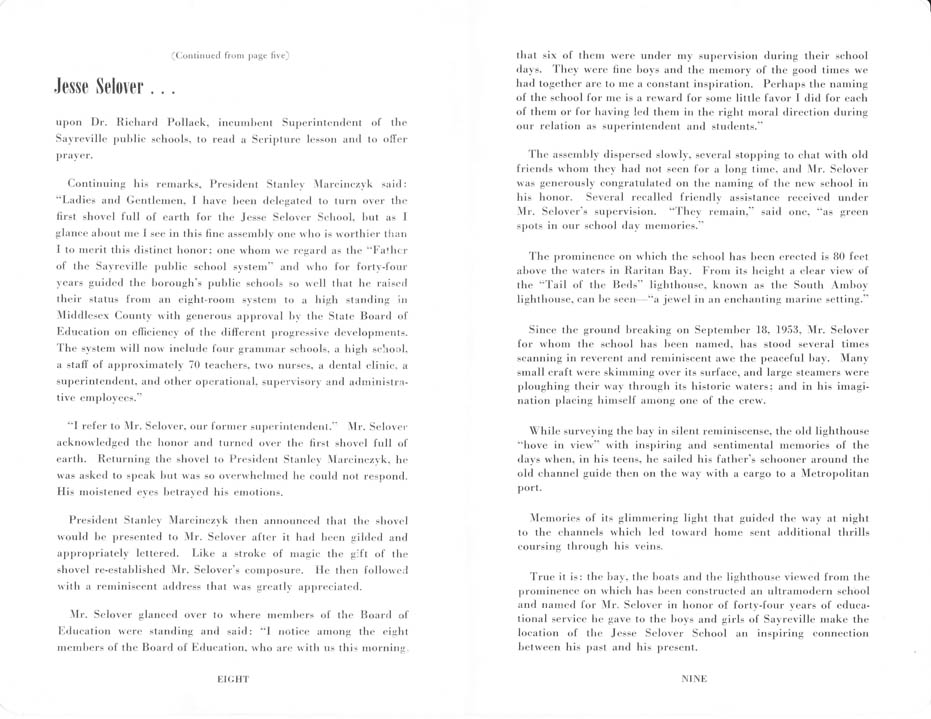

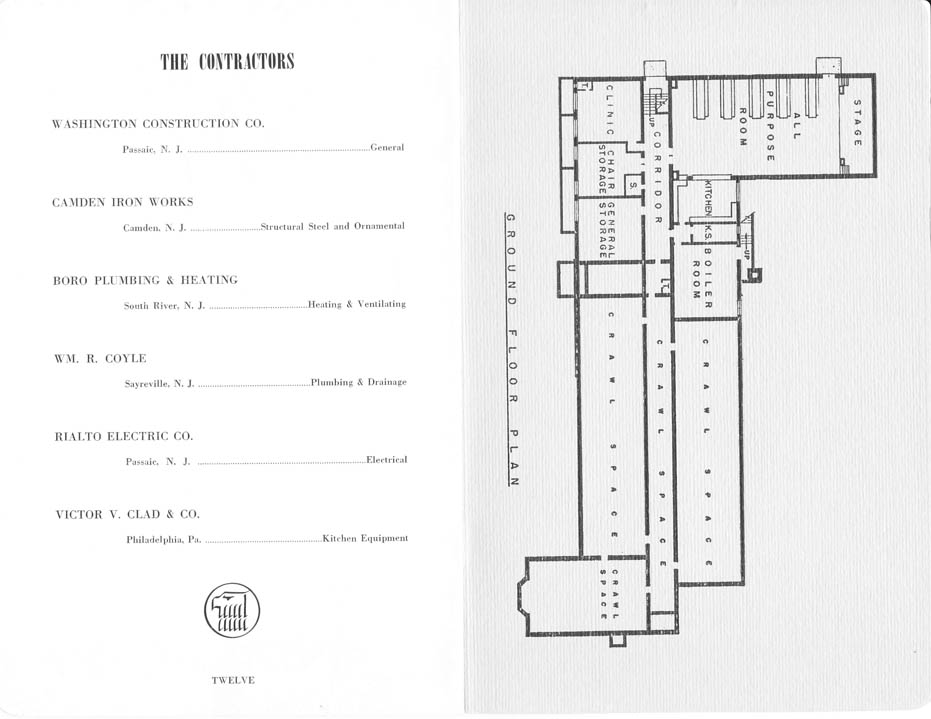
Make it Bigger
Four years after Selover (that’s what we called it) opened, Sayreville voters approved funding for a new school in the Sayre Woods section, which would eventually be named Samsel School (no idea who Samsel was), as well as additions to three existing schools, including Selover.
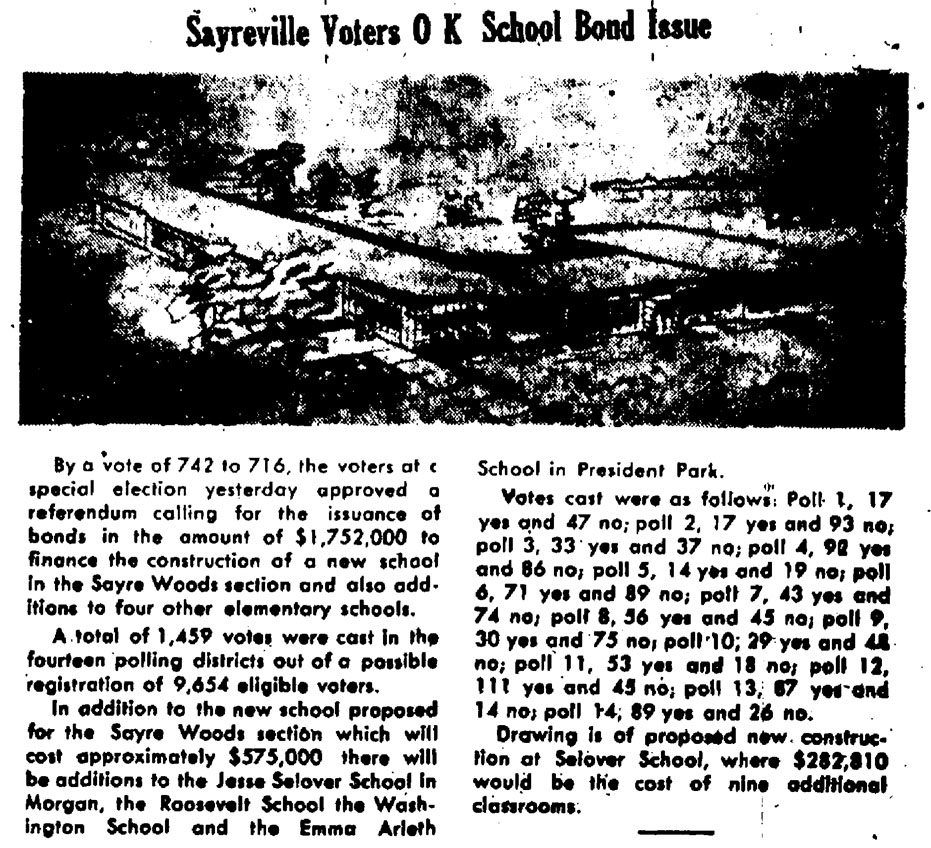
The above article is from page six of the September 4, 1958 South Amboy Citizen.
This expansion added additional classrooms on the north side of the existing structure and moved the nurse, administrative office, and principal’s office on the other side of the new hall and entrance located next to the Kindergarten classroom.

Not sure when the new section, which featured many classrooms down one long downward sloping hallway and a smaller perpendicular hallway, opened. It was certainly in place and used by the very early 1960’s. Sometime after the 8th grade class of 1962 graduated, Selover moved to a K-6 school configuration with two classrooms for each grade level. Grades 7 and 8 were moved one, or perhaps more, other schools. At some point Sayreville War Memorial High School (SWMHS) was built and later, next to it, the Sayreville Junior High School (grades 7, 8 and 9) was built. Over time which grades were where changed. During my time in the Sayreville school system, Selover was K-6, the Junior High School was 7-9 and Sayreville War Memorial High School was grades 10-12. Today SWMHS is a four-year school (grades 9-12) and what was the Junior High School is now the Sayreville Middle School (grades 6-8).
The 1959 Selover School expansion has been the only building expansion and quite likely will be the last expansion. All the land in Morgan is pretty fully populated with single-family structures. There are very few areas which could be accommodate more single-family housing structures. If in the future, Morgan swaps out single-family structures to more multi-family structures, such as Morgan’s Bluff apartments constructed and opened around 2016 on what was the parking lot of Kozy Joes and Club Bene, then perhaps the need for more classroom space might cause the need for expansion. The question at that time would still be “where?” as presently Selover School is surrounded by houses, cliffs, three baseball fields and a small park.
The future is a pretty long time so who knows what Morgan and Jesse Selover School will be like in the year 2100 and later?
Jesse Selover School Memories
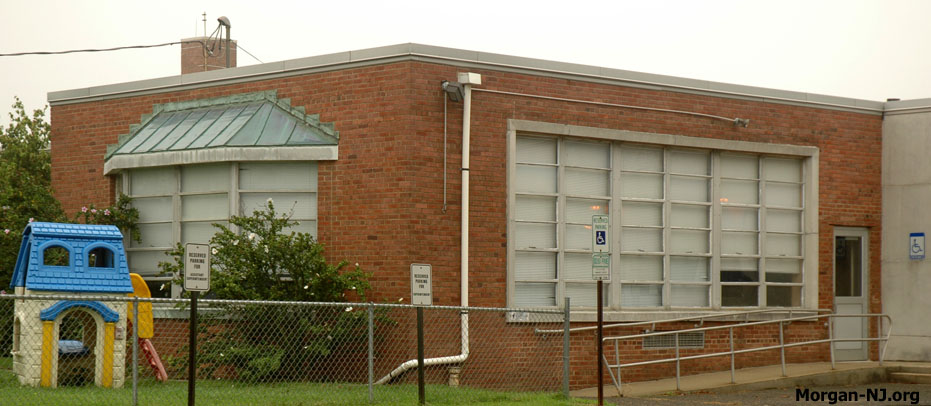
In the day (or many days), Mrs. Tuthill had her Kindergarten classroom in the front classroom with the bay window. In my day, she had a morning class for those of us who had to take a bus and an afternoon class for those who could walk there. I remember being outside on a very snowy and frosty winter morning looking through the door window at Mrs. Tuttle who was all warm and toasty inside. Seemed like torture time.
Here is a work-in-progress page which will hopefully contain a complete list of all the faculty and staff of Jesse Selover School. If you have some additions or corrections, please let us know!
At one time I was able to find a site on the internet which had many class and other photos from people of their days at Jesse Selover School. That page seems to be long gone – or at least I can’t find it anymore.
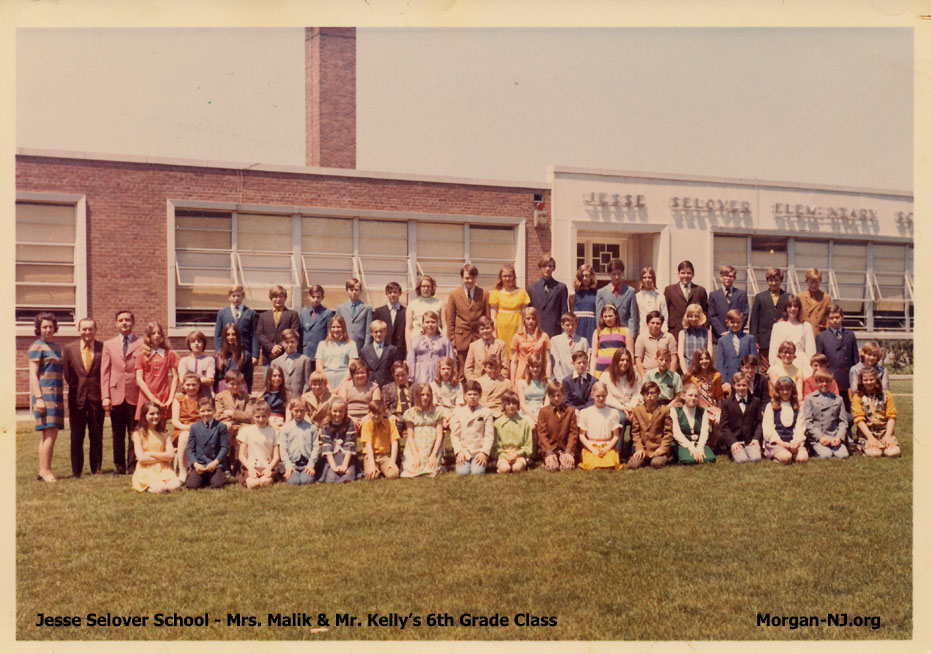
Here is a photo of Mrs. Malik and Mr. Kelly’s 6th grade class. The year is not indicted by request though it was during the time when, the pledge of allegiance happened first thing in the morning followed by a moment of silence, there was no air conditioning, fire and bomb threats required students to evacuate the building, air raid drills required students to go under their desks. Can you imagine?
Perhaps readers can help us fill in the missing or incorrectly spelled names of the people in this photo (please indicate row number and seat number, e.g., “Row 1, 13-girl is Brenda Stewart”):
Left to Right – 1st row (kneeling):
1-girl, 2-boy, 3-Janet Lockwood, 4-boy, 5-girl, 6-boy, 7-girl, 8-Greg Scully, 9-girl, 10-boy, 11-girl, 12-John Ksenicz, 13-Brenda Stewart, 14-boy, 15-girl, 16-boy, 17-Arden James
Left to Right – 2nd row (sitting):
1-girl, 2-boy, 3-girl, 4-boy, 5-girl, 6-Richard Bloodgood, 7-Susan Schwankert, 8-Barry Marcinczyk, 9-girl, 10-boy, 11-girl, 12-boy, 13-girl, 14-boy, 15-girl, 16-boy, 17-girl
Left to Right – 3rd row (standing):
1-Mrs. Malik (Teacher), 2-Mr. Kelly (Teacher), 3-Mr. Singer (Principal), 4-Judy Przybylski (sp), 5-boy, 6-Elaine Campbell, 7-boy, 8-Ann-Marie King, 9-boy, 10-Cynthia Trubilla, 11-Nick Katko, 12-girl, 13-boy, 14-Wendy ???, 15-boy, 16-Karen Hardy, 17-boy, 18-girl, 19-Steve Gaul
Left to Right – 4th row (standing):
1-John Wilson, 2-Bruce Snekszer, 3-Paul ???, 4-Rudy Gronsky, 5-Tim Brennan, 6-Sharon Frank, 7-Francis Kriesmer, 8-Linda Topolancik, 9-Richard Pollak, 10-Michele ???, 11-Verne James, 12-Diane Wilson, 13-John Quirke, 14-Michael Prevoznak, 15-boy, 16-Michael O’Neill
Jesse Selover School Today
I moved out of Morgan many decades ago and don’t really have much info regarding what role Jesse Selover School played in the late 1970’s to today. Perhaps our readers can help fill in the blanks?
According to the Jesse Selover School web site, the Jesse Selover School building currently plays two very important roles:
- “…provided a free full-day Preschool Program to the 3- and 4-year-old children that live in the Borough of Sayreville.” It isn’t clear if this is still provided.
- Administrative Offices for the Sayreville Public Schools District where the Superintendent of Schools and staff are located.
Note that as will all other Sayreville schools, entry into Jesse Selover School requires passing through a metal detector.
As I understand it, at one point, Jesse Selover School was rented out to the City of South Amboy. Does anyone know more about that and when that was?
It is a testament to all of the custodial staffs during the life of the school, and the Borough and Board which funded it, that the interior of the school still essentially looks like it did decades ago when it was young and new. The tiles on the floor remain sparking and the bricks on the walls unblemished.
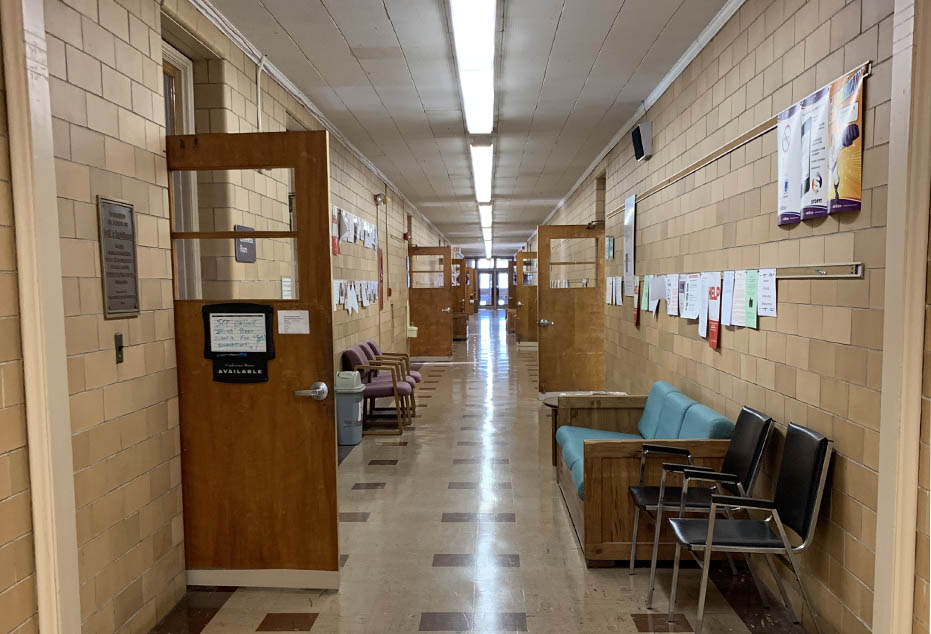
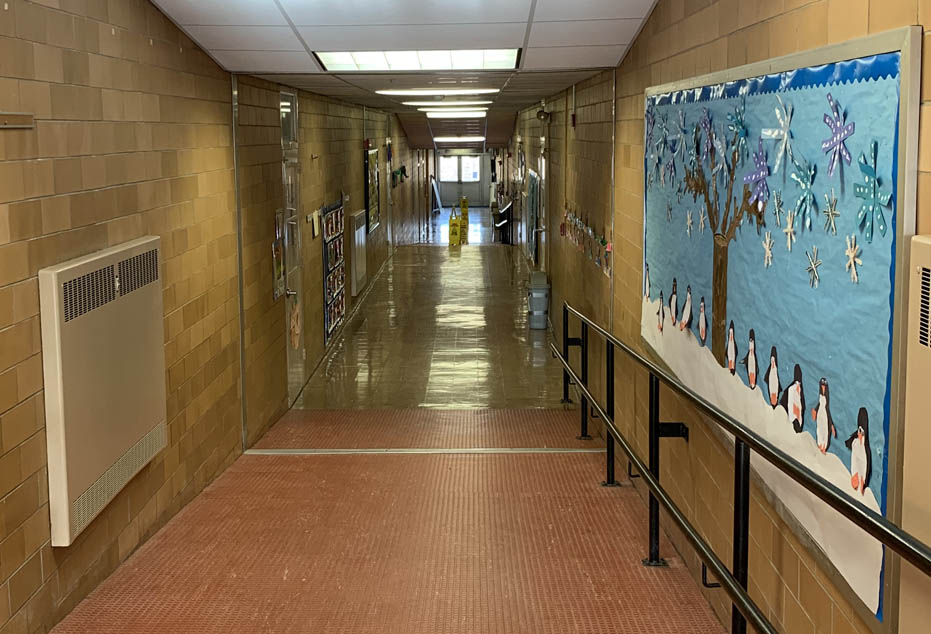
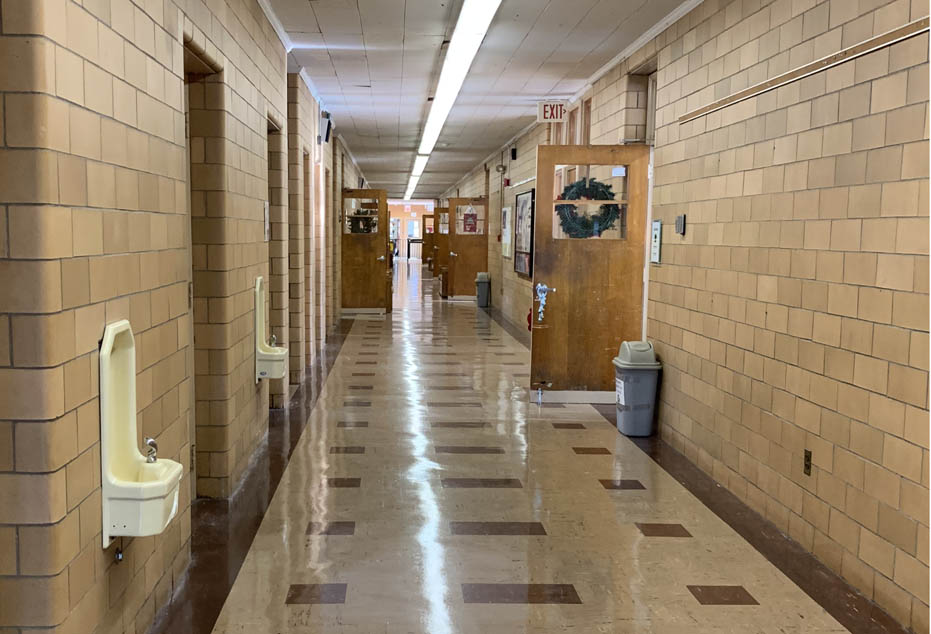
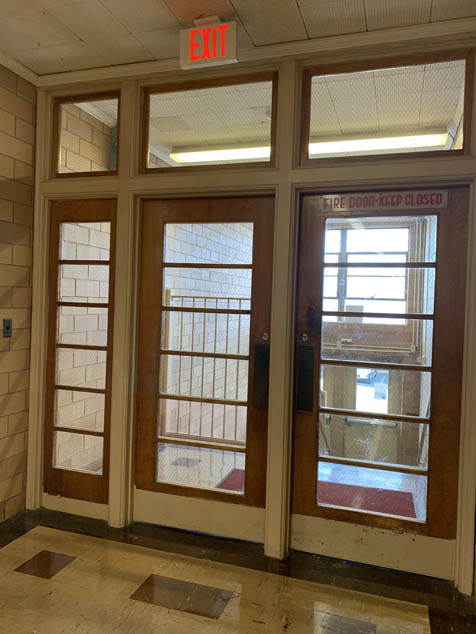
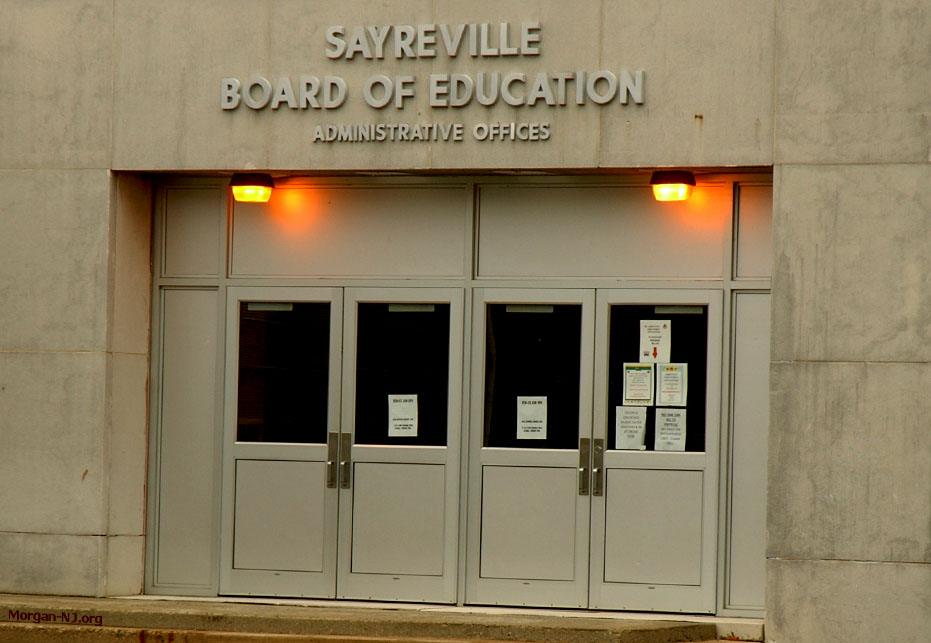
The Future
Sacred Heart School in South Amboy closed on June 30, 2016 due to low enrollments after over 100 years of community service.
St. Mary’s High School in South Amboy closed in June 2015 after having been founded in 1885.
Sayreville New School No. 1 became the permanent home of the Sayreville Historical Society Museum in 1984 and is very much worth a visit to learn about the history of Sayreville (and Morgan)!
Hopefully, Jesse Selover School will remain standing and useful for many more decades, if not centuries, and continue to pay honor to the man for which it is named.
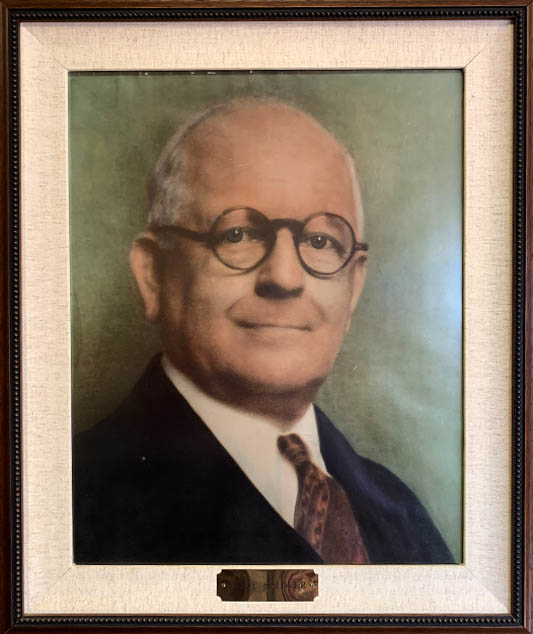
Originally posted on December, 14, 2020.